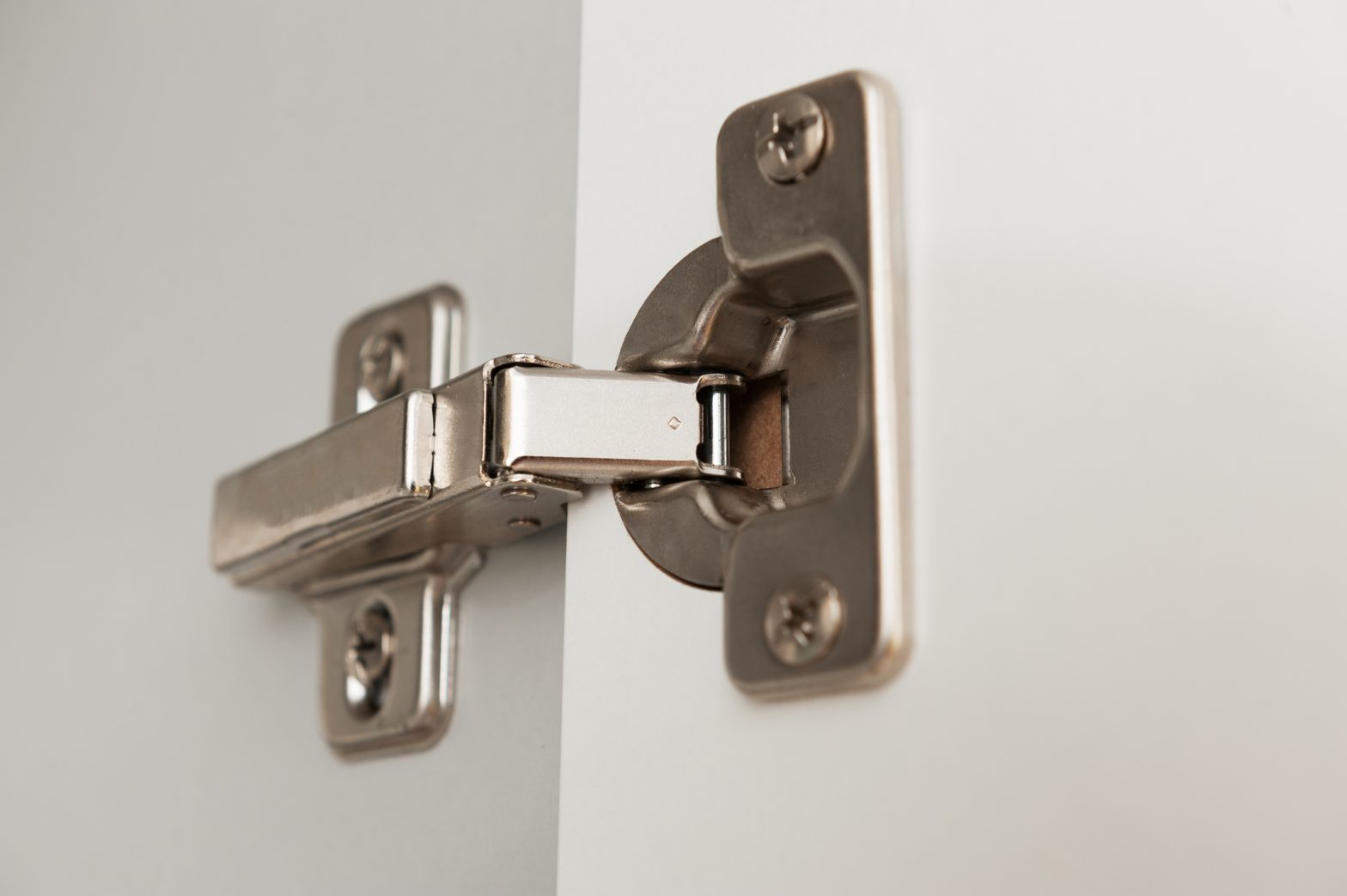
Are your hinges not functioning correctly? Or are you considering having new cabinets installed, and want to accomplish a certain look? In this comprehensive guide, we will unlock the mysteries of cabinet hinges, delving deep into their inner workings. From the classic face frame hinges to the more discreet concealed hinges, we will explore every type imaginable, shedding light on their unique functionalities.
Get ready to become an expert as we unveil the intricate parts that make up each hinge, providing you with the knowledge needed to choose the fitting option option for your kitchen cabinet installer
There are several components that make up a cabinet hinge, each playing a crucial role in its functionality and installation. Let’s take a closer look at these components:
Mounting plate: This is the part of the hinge that attaches to the cabinet frame or door.
Arm: The arm connects the mounting plate to the hinge cup.
Hinge cup: This part of the hinge is attached to the door and allows it to open and close.
Spring mechanism: Some hinges come with a spring mechanism that provides self-closing or soft-closing functionality.
Screws: Screws are used to secure the hinge components in place.
There are several types of cabinet hinges available for you to choose from, each with its own advantages and disadvantages. Understanding the different types will help you make an informed decision on which hinge will best suit your needs.
These are one of the most commonly used types of hinges, especially in traditional cabinetry. They have two parts – one is attached to the door, and the other is attached to the face frame of the cabinet. The hinge allows for a limited opening angle, usually 100 degrees or less.
Also known as “concealed hinges,” these hinges are hidden from view when the cabinet door is closed. They attach directly to the inside of the cabinet side panel and are adjustable in three directions – up and down, side to side, and in and out. They provide more flexibility compared to face frame hinges.
These are the simplest type of hinges, consisting of two equal rectangular leaves connected by a cylindrical pin. They are commonly used for smaller cabinets or with lightweight doors.
These hinges have one leaf attached to the door and another to the cabinet frame. They are available in a variety of overlays, meaning they can be installed on both face frames and frameless cabinets.
This type of hinge is typically used for full overlay doors that open at 180 degrees. They have two parts – one attached to the top and the other to the bottom of the door, allowing for a smooth opening and closing motion.
Choosing the right hinges for your kitchen cabinet is critical because the wrong hinges can affect the functionality and appearance of your cabinets. Here are some tips to keep in mind when making your selection:
Consider the weight and size of your cabinet doors when choosing a hinge. Larger or heavier doors may require sturdier hinges.
Take into account the style of your cabinets. For traditional or classic styles, face frame hinges would be more suitable, while Euro hinges work well for modern and sleek designs.
Pay attention to the opening angle of the hinge. It should be able to open wide enough to allow easy access to your cabinet’s contents.
Make sure the hinge you choose is compatible with your cabinet’s door thickness.
If you are unsure about which type of hinge to use, consult a professional or ask for recommendations at your local hardware store.
Over time, cabinet hinges can wear out or become damaged due to frequent use or improper installation. Here are some signs that indicate your cabinet hinges may need to be replaced:
The door does not close properly: If the door does not close completely or seems misaligned, it could be a sign of worn-out hinges.
The door squeaks or makes noise when opened or closed: This could be due to loose or damaged hinges.
The door hangs at an awkward angle when opened: This could indicate that the hinges are not strong enough to support the weight of the door.
If you notice any of these signs, it may be time to replace your cabinet hinges, and maybe even your cabinets! Remember if your cabinets are still in good condition, high-quality hinges and install them correctly for optimal performance and longevity.
While installing kitchen cabinets may seem like a simple task, it is actually a complex process that requires precision and expertise. Here are some reasons why you should consider hiring a professional for the job:
Professional installers have years of experience and know how to take precise measurements to ensure that your cabinets fit perfectly in your kitchen.
Installing cabinets requires specialized tools and techniques that professionals are trained in. They will ensure that your cabinets are installed securely and leveled properly.
Installing kitchen cabinets can be a difficult and time-consuming task, especially if you have little experience with it. Hiring a professional will save you time and effort, allowing you to focus on other important aspects of your home renovation.
A professional installer will have the expertise to handle any challenges that may arise during the installation process, avoiding costly mistakes that could potentially damage your cabinets or kitchen walls.
If you are looking for high-quality kitchen cabinets and professional installation services, look no further than Express Cabinet and Granite. Our team of experts will guide you through the process of choosing the right hinges for your cabinets and ensure a flawless installation.
Contact us today to learn more about our services and get started on your perfect kitchen!